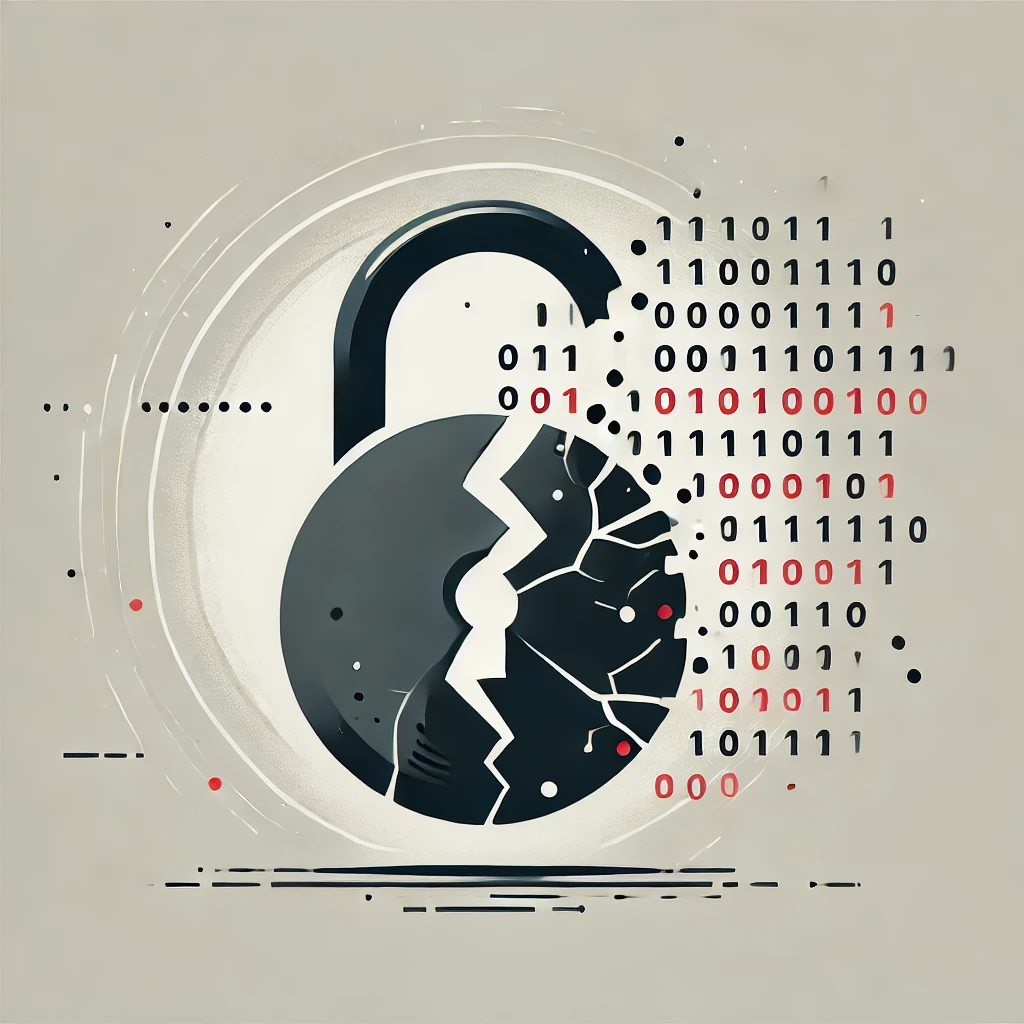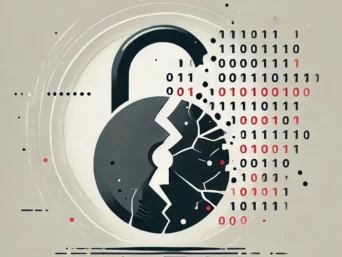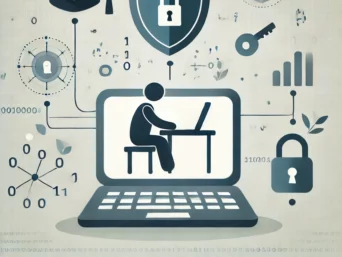Emerging Trends in Cybersecurity for 2025
In an increasingly connected and digitized world, cybersecurity remains a crucial pillar for protecting sensitive data and critical systems against ever-evolving threats. In 2025, as technologies continue to advance exponentially, new trends are reshaping the field of cybersecurity, bringing both complex challenges and strategic opportunities for industry stakeholders.
The year 2024 was marked by sophisticated cyberattacks targeting critical infrastructure, highlighting the persistent vulnerabilities of organizations in the face of increasingly advanced threats. Tactics such as next-generation ransomware, phishing campaigns amplified by artificial intelligence, and massive data breaches underscored the urgency of adopting a proactive cybersecurity approach based on anticipation, rapid detection, and coordinated responses.
In this context, this article explores emerging trends in cybersecurity for the year 2025. We will analyze upcoming threats as well as innovative security technologies likely to play a crucial role in protecting digital ecosystems. Additionally, we will highlight the growing importance of user awareness and adaptation to regulatory requirements in an ever-evolving digital environment.
These elements will provide an overview of the challenges and opportunities awaiting cybersecurity professionals in 2025, while highlighting the strategies needed to enhance organizations' resilience against increasingly complex threats.
1. Evolution of Cyber Threats
The rapid evolution of cyber threats remains one of the most critical challenges for cybersecurity professionals in 2025. Cyber attackers are constantly refining their tactics, exploiting both new and existing vulnerabilities to compromise data, digital infrastructures, and even supply chains. In 2025, these attacks are becoming even more sophisticated, making the protection of digital systems more vital than ever.
Ransomware continues to evolve in 2025, now targeting not only data but also critical services such as energy and healthcare. These attacks are systematically accompanied by the exfiltration of sensitive data, increasing the pressure on victims to pay a ransom. Additionally, social engineering tactics leverage generative artificial intelligence tools to craft highly personalized and convincing messages, increasing the success rate of intrusions.

Phishing has also become more sophisticated and harder to detect. By leveraging information gathered from social media and compromised databases, cybercriminals customize their campaigns in unprecedented ways. These attacks particularly target executives and system administrators, increasing the risk of access to sensitive systems.
Faced with this increasing complexity, organizations must adopt a proactive and multi-layered defense strategy. This includes deploying advanced technologies such as behavioral detection, capable of identifying suspicious activities in real time. Employee training remains essential to reduce the risk of human error, particularly in response to social engineering. Additionally, regular backups and well-practiced incident response plans play a key role in mitigating the impact of a successful attack.
In summary, cyber threats in 2025 require constant vigilance and adaptive security approaches. By investing in innovative tools and strengthening their organizational resilience, companies can better prepare to counter increasingly bold attacker tactics and reduce their overall exposure to cyber risks.
2. Governance and Compliance
Governance and regulatory compliance remain crucial pillars of cybersecurity in 2025, as legislative frameworks become stricter and expand in response to escalating cyber threats. Businesses face increasing pressure to comply with complex regulations aimed at protecting sensitive data, ensuring information confidentiality, and strengthening the resilience of critical infrastructures.
In Europe, the GDPR remains a key benchmark, requiring organizations to rigorously protect personal data under the threat of severe financial penalties. Additionally, the NIS 2 Directive, now in force, expands security obligations to essential service operators and large companies in strategic sectors, mandating regular audits and enhanced measures to prevent cyberattacks. In North America and Asia, similar laws, such as frameworks for the cybersecurity of critical infrastructure, are helping to standardize global practices.
To comply with these requirements, organizations must integrate security into all aspects of their governance. This includes adopting clear policies, appointing dedicated personnel, and strengthening risk management processes. Regular security audits and cyberattack simulations help identify weaknesses and improve defense strategies. Additionally, collaborating with external experts assists businesses in navigating the complex landscape of regulatory requirements.
However, compliance goes beyond legal obligations. In 2025, organizations are also adopting recognized frameworks such as ISO 27001 and NIST best practices to establish a strong foundation in cybersecurity. These approaches help build customer trust, attract new business partners, and stand out in an increasingly competitive market.
Governance and compliance in 2025 go far beyond mere adherence to standards. By adopting a proactive approach, anticipating legislative changes, and continuously strengthening their systems, businesses can reduce their exposure to cyber risks and sustain their reputation in an ever-evolving digital market.
3. Emerging Security Technologies
In 2025, emerging security technologies take center stage in the fight against increasingly sophisticated cyber threats. Faced with attacks that grow in complexity and scale, organizations are adopting technological innovations to strengthen their cybersecurity posture and protect their critical assets.
The integration of artificial intelligence (AI) and machine learning (ML) remains a key trend. These technologies enable the real-time analysis of vast amounts of data to detect anomalies and identify suspicious behaviors. For instance, advanced algorithms are now capable of predicting an attacker’s movements within a network before a significant intrusion occurs. AI is also being integrated into endpoint security solutions, providing proactive protection against unknown malware.
Cloud-based security solutions continue to grow in popularity. By 2025, they are diversifying to include highly specialized services, such as on-demand encryption and decentralized access management. These platforms provide centralized protection, ensuring continuous threat monitoring while adapting to the evolving needs of hybrid IT environments. Benefits include automatic updates and near-infinite scalability, which are essential in a context where cloud workloads are increasing exponentially.
In an increasingly strict regulatory environment, data privacy-focused technologies play a strategic role. Post-quantum encryption, designed to counter potential threats from quantum computers, is emerging as a priority for organizations looking to future-proof their security. Additionally, tools like homomorphic encryption enable the processing of sensitive data without ever exposing it, providing a critical layer of protection against breaches and enhancing compliance with standards such as the GDPR.

Advances in security automation and orchestration are also revolutionizing incident management. SOAR (Security Orchestration, Automation, and Response) platforms streamline detection and response processes by automating repetitive tasks. By integrating advanced detection systems and rapid response tools, these technologies significantly reduce reaction times to threats, thereby minimizing potential damage.
Emerging security technologies in 2025 are essential to addressing the growing challenges of the digital landscape. Whether it’s AI-powered solutions, scalable cloud services, or advanced encryption techniques, their adoption enables organizations to stay ahead of cyber attackers. However, their effectiveness depends on thoughtful implementation and integration into a comprehensive security strategy, ensuring consistent and sustainable protection against current and future threats.
4. Collaboration and Information Sharing
In the complex and evolving cybersecurity landscape of 2025, collaboration and information sharing among industry stakeholders have become essential levers for strengthening collective resilience against increasingly sophisticated threats. Well-organized and often transnational attackers compel businesses, governments, and international organizations to join forces to effectively detect, prevent, and respond to cyberattacks.
Shared Security Operations Centers (collaborative SOCs) play a central role in this dynamic. These structures enable multiple organizations to pool their resources, share real-time threat intelligence, and coordinate their responses. Leveraging advanced analytics tools and AI-powered algorithms, these SOCs provide enhanced visibility into emerging threats and facilitate rapid and appropriate responses.
Moreover, threat information-sharing forums, such as Information Sharing and Analysis Centers (ISACs), are proliferating across various critical sectors. These platforms bring organizations together to exchange indicators of compromise (IoCs), adversary tactics, and defense strategies. By 2025, information sharing has further accelerated thanks to standardized protocols and automated tools, enabling more effective anticipation of attacks.
Public-private partnerships remain a cornerstone of cybersecurity collaboration. Governments work closely with businesses to develop regulatory frameworks, share information on global threats, and organize large-scale simulations. These initiatives help bridge gaps between the public and private sectors while strengthening mutual defense capabilities.
At the international level, cooperation between states is becoming essential as cybercriminals exploit legal and geographical loopholes to carry out their attacks. Agreements such as the Budapest Convention on Cybercrime and new multilateral initiatives strengthen intelligence sharing and response coordination on a global scale. As early as 2024, multinational cybersecurity exercises (e.g., Locked Shields) highlighted the importance of international collaboration against cyber threats, a practice that is expected to continue and intensify in 2025.
Collaboration and information sharing remain pillars of modern cybersecurity. By adopting a collaborative approach, organizations can anticipate emerging threats, pool resources to better detect and respond to cyberattacks, and strengthen the resilience of cyberspace as a whole. Effective collective security relies on the synergy between technological innovation, strategic partnerships, and international exchanges.
5. Importance of Security Awareness
In 2025, the importance of security awareness remains a critical pillar in combating cyberattacks. Despite technological advancements, end users are still the first line of defense against threats. Awareness programs are designed to educate employees on best practices, emerging threats, and the behaviors to adopt to prevent incidents.
Effective awareness begins with a thorough understanding of the risks. Users must be informed about constantly evolving attack methods, such as AI-enhanced targeted phishing, sophisticated ransomware, and supply chain intrusions. By recognizing warning signs and understanding the potential impact of their online actions, employees can better anticipate and counter these threats.

Awareness also emphasizes the adoption of secure behaviors. This includes creating strong passwords, enabling multi-factor authentication, regularly updating software, and staying vigilant against suspicious links or attachments. In 2025, interactive training tools make these programs more engaging and effective.
Beyond preventing attacks, awareness plays a crucial role in incident response. Users must be trained to promptly report any suspicious behavior or security breaches. By incorporating realistic simulations, such as simulated phishing campaigns, organizations can assess employee responsiveness and refine their strategies.
Finally, awareness helps establish a sustainable security culture within organizations. By involving leadership and promoting collective responsibility, cybersecurity becomes a shared priority. Such a culture enhances overall resilience and significantly reduces the risks of data breaches and business disruptions.
Security awareness remains a fundamental element of any cybersecurity strategy in 2025. By investing in innovative programs tailored to emerging threats, organizations can strengthen their security posture, reduce their risk exposure, and build a culture of vigilance essential in an increasingly complex digital world.
Conclusion
In 2025, the cybersecurity landscape continues to be shaped by growing challenges and unprecedented opportunities. Key trends, such as the evolution of cyber threats, strengthened governance and compliance, the adoption of emerging security technologies, international collaboration, and the heightened importance of security awareness, are redefining organizational priorities.
In the face of increasingly coordinated and sophisticated attackers, it is imperative for businesses to maintain constant vigilance and adopt proactive approaches. These strategies must combine prevention, advanced detection, and rapid incident responses while adhering to ever-evolving regulations. The integration of robust governance ensures sustainable compliance and better protection of critical infrastructures.
Technological advancements, particularly in artificial intelligence, scalable cloud services, and post-quantum encryption, provide powerful tools to enhance the security of data and systems. However, their effectiveness relies on strategic implementation and integration into a comprehensive information security approach, tailored to the specific needs of each organization.
Moreover, collaboration and information sharing among various stakeholders, both nationally and internationally, are becoming fundamental elements for anticipating threats and effectively responding to cross-border attacks. This cooperation not only strengthens collective resilience but also fosters the emergence of a safer cyberspace.
Finally, security awareness remains an indispensable pillar for reducing exposure to attacks. By involving all users, from frontline employees to executives, organizations can build a security culture that becomes a collective strength against threats.
In summary, the year 2025 demands heightened preparation and continuous adaptation to the new dynamics of cybersecurity. By combining technological innovation, strategic governance, collaboration, and awareness, organizations can better protect their assets, ensure the availability and integrity of their data, and strengthen their resilience against increasingly complex cyber threats.
Frequently Asked Questions & Answers
What are the main cybersecurity trends for 2025?
The main cybersecurity trends for 2025 include the increasing sophistication of cyber threats, such as AI-enhanced ransomware and phishing attacks, the emergence of post-quantum encryption, the widespread adoption of Zero Trust architectures, the strengthening of regulatory frameworks, and the growing importance of international collaboration to share threat intelligence.
How can businesses protect themselves against sophisticated cyberattacks?
Businesses can protect themselves by adopting a proactive strategy that combines cutting-edge technologies, such as AI-powered solutions and SOAR platforms, with enhanced security awareness practices for their employees. Additionally, implementing robust backups, enabling multi-factor authentication, and collaborating with external partners to share threat intelligence are essential.
What are the advantages of cloud-based security solutions?
Cloud-based security solutions offer flexibility, scalability, and continuous monitoring tailored to modern digital environments. In 2025, they include advanced features such as on-demand encryption, centralized threat management, and automatic updates. These solutions enable seamless integration with hybrid infrastructures while providing protection against emerging threats.
How can businesses ensure regulatory compliance in cybersecurity?
Businesses should integrate frameworks such as ISO 27001 and follow NIST best practices to structure their security policies. This involves regular audits, thorough risk assessments, and the implementation of processes aligned with new regulations, such as the NIS 2 Directive or AI-specific standards. Training programs to ensure employees understand and apply these policies are also essential.
Why is security awareness important in the fight against cyberattacks?
In 2025, security awareness remains crucial as end users still represent the first line of defense against cyber threats. Immersive training, realistic simulations, and the promotion of secure behaviors help reduce human errors, which are often exploited by attackers. By fostering an organizational culture focused on cybersecurity, businesses can strengthen their overall defense posture.

